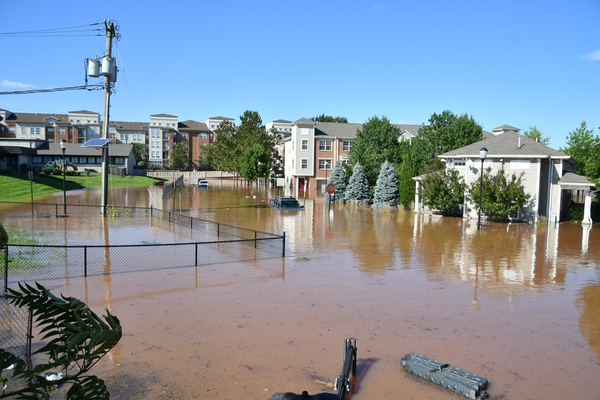In the Fall of 2021, in the wake of Hurricane Ida, thousands of utility workers in Louisiana were scrambling to get the power back up and running, and that could take weeks. And in New Orleans, a natural gas plant that was supposed to provide emergency power failed, compounding the recovery efforts. But at one affordable apartment building in the city, the lights remained on, all due to its solar microgrid.
As Fast Company reports, on top of the building—the first net-zero apartment complex in the state—450 solar panels send electricity to a battery storage system in the parking lot. Though the system needed a repair after the storm (which was delayed because roads were closed) the power started flowing again on Tuesday as the rest of the neighborhood was still dark. “It came back online, and we were able to give people almost eight hours of electricity running off the battery,” said Lauren Avioli, the director of housing development at SBP, the nonprofit behind the 50-unit building, called the St. Peter Apartments.
The building opened in early 2020, and the solar microgrid was tested within months, as Hurricane Zeta caused multiday outages last October in New Orleans. “Our battery system kicked on,” said Avioli, in her interview with Fast Company. “When the power went out, I don’t think a lot of residents even realize that the city power grid went down. The building switched over. And then again, for winter storm Uri, the same thing happened.”
Even when the city isn’t dealing with a disaster, the system helps build resilience. Half of the apartments in the mixed-income building are prioritized for veterans; many are transitioning out of homeless shelters or recovery centers. Affordability is key, and the solar panels can help offset electricity costs. “It’s not just post-disaster emergency power,” she says. “It’s also helping people at the property save money on a blue sky day because we can use some of the energy that’s being generated by the solar panels to run the building. By doing that, we’re not pulling all of our power off the city grid. And so we’re not charging the tenants for all the kilowatts that they’re using, because, obviously, what’s coming from the solar panels is free.”
The St. Peter Apartments building was designed to be as energy-efficient as possible, and the solar panels are supposed to provide enough power for the whole building. But when the building opened during the pandemic, and many residents were stuck at home all day, the team realized that demand could outstrip supply. On a normal day, that would mean taking more energy from the grid. But right now, it means that power each day from the solar microgrid is limited. Weather is another factor; Tuesday was cloudy, and meant that the solar panels couldn’t produce as much power as they usually would. A heat wave means that residents want to use air conditioning, which also increases demand. “We’re learning every month, every hurricane, every time the battery goes on, just what variables come into play, and how long we might expect a battery to last,” said Avioli.
According to Fast Company, using solar energy also helps support resilience because it reduces emissions, and climate change is making hurricanes like Ida stronger and more damaging. Entergy, the local utility, helped fund the project, though it has also been criticized for moving slowly away from fossil fuels, including pushing for a new natural gas plant in a low-income neighborhood; when some community leaders objected, it reportedly hired paid actors to testify in support of the gas plant at meetings. Entergy’s solutions were also considered very costly, and that cost would be passed along to taxpayers.
However, as The Greater New Orleans Interfaith Climate Coalition pointed out, Entergy wasn’t the only entity to offer up a proposal to the City Council. The advocacy groups Alliance for Affordable Energy and Together New Orleans were also set to submit proposals Friday that rely heavily on “microgrids,” which can operate as islands of electricity even if big storms knock out transmission and feeder lines. In its filing, the Alliance for Affordable Energy said the City Council should look at “creative financing models” that minimize the burden on ratepayers, including incentives for homeowners to install solar panels. “New Orleans ratepayers, who suffer one of the highest energy burdens in the country, must not be made to bear the full cost of resilience and storm hardening measures that Entergy should have undertaken years ago,” the group said.
Entergy’s plan also suggested that there could be a role for microgrids in the future. Although the public version of the company’s filing does not include a detailed list of projects, the utility says they could add another $200 million to the cost of its overall proposal. “At a high level, Entergy New Orleans is proposing a variety of microgrid options for consideration and further discussion, including battery, natural gas, solar, and hybrid options,” said Lee Sabatini, a utility spokesperson. Sabatini said the non-public lists of hardening and microgrid projects contain “highly sensitive information” that “would be competitively and operationally harmful to disclose.”
Photo Credit: Sarah J Lee / Shutterstock.com
